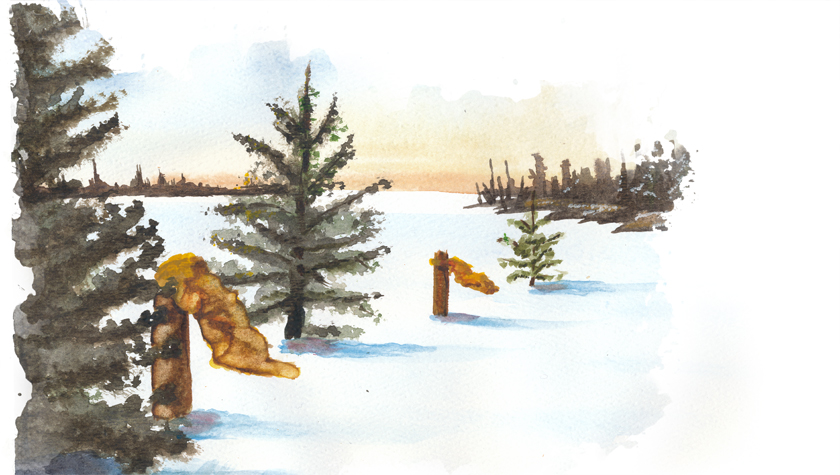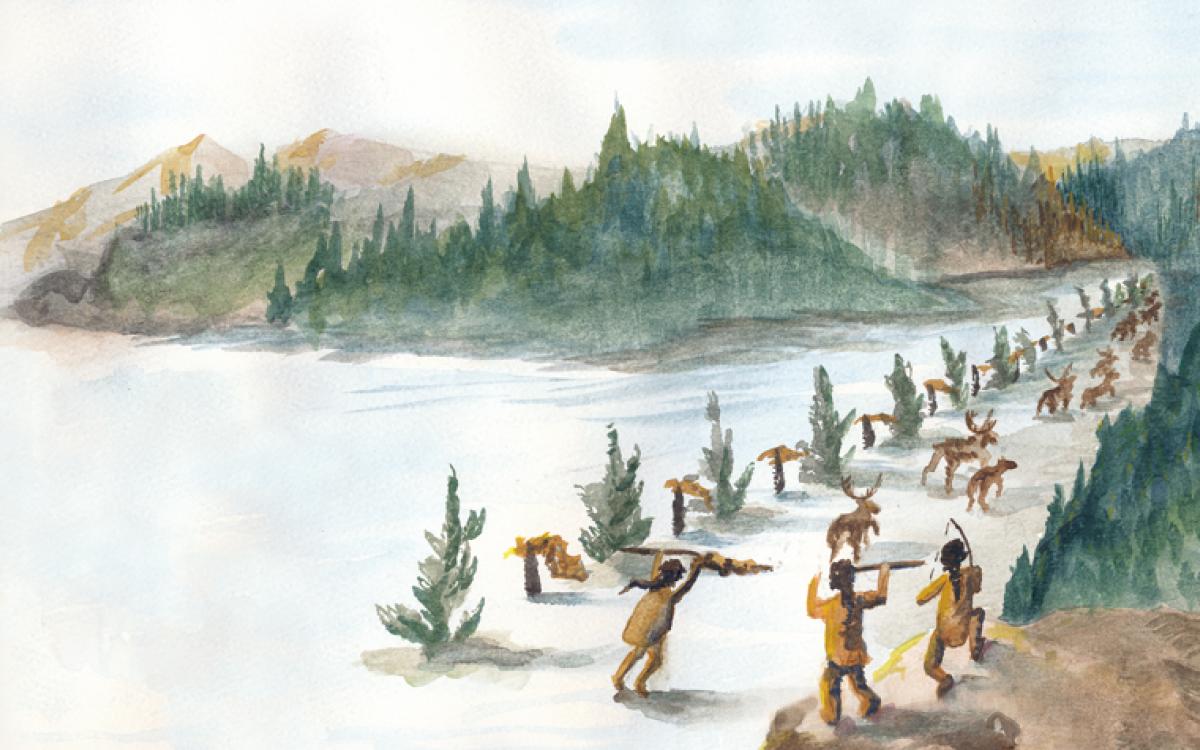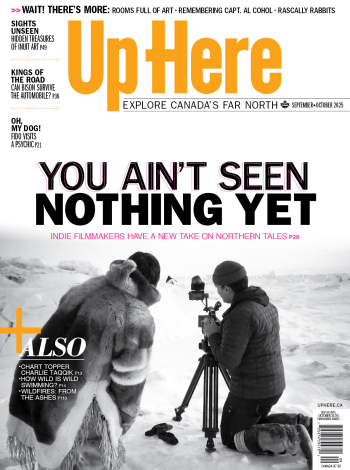To the Dene, caribou is life. Their flesh is food, bones are tools, hair is insulation and bedding. For clothing and shelter alone, pre-contact Dene needed dozens of caribou per year. Tracking and killing single caribou kept bellies full—but to replenish supplies, the Dene needed a massive, coordinated hunt.
The Tłįchǫ lived a nomadic lifestyle between Great Slave Lake and Great Bear Lake. In late winter, they would gather into multi-family groups—as many as 45 people—and intercept a caribou herd migrating north into its summer feeding grounds on the Barrenlands. At a place called Fence Narrows, just south of Great Bear Lake, they’d construct a fence on the frozen lake to corral the herd. In March of 1771, trekking north from Churchill, Manitoba with Chipewyan guides, fur trader Samuel Hearne came across a similar caribou fence near the Dubawnt River in what is now the southeastern NWT. He was impressed by the lifestyle of the people who lived off the caribou in this way, compared to some Cree and Chipewyan who had become dependent on trading furs at Prince of Wales Fort.
“It must be allowed that they are by far the greatest philosophers, as they never give themselves the trouble to acquire what they can do well enough without,” wrote Hearne. “The [caribou] they kill, furnishes them with food, and a variety of warm and comfortable clothing, either with or without the hair, according as the seasons require.”












